SXSW 2010 and RWW Co-Hosts a Party at Austin City Limits
I attend South by Southwest for the first time, including a concert ReadWriteWeb co-hosts with PBS and other US media luminaries. The question is: will we get into our own party?

For the first time, in March 2010, I was headed to Austin for South by Southwest (SXSW), the popular internet conference I’d heard so much about.
Eight of us from RWW were attending SXSW: myself and Elyssa, Sean, Marshall, Frederic, Jolie, Mike Melanson, and our webmaster, Jared Smith. Sean was a regular at SXSW, so he would’ve gone regardless, but I also needed him there to help organize a party we were cohosting at Austin City Limits Studio with PBS, NPR, and Frontline. The headlining act was Band of Skulls, an up-and-coming rock group.
PBS had approached us about the City Limits party in January. We’d have to pay $3,000 to be named a cohost, but we jumped at the opportunity. Clearly, RWW was the fourth wheel among the hosts—they’d likely chosen us to get some internet street cred among the SXSW Interactive geeks. But we couldn’t pass up having our name associated with three prestigious American media brands.
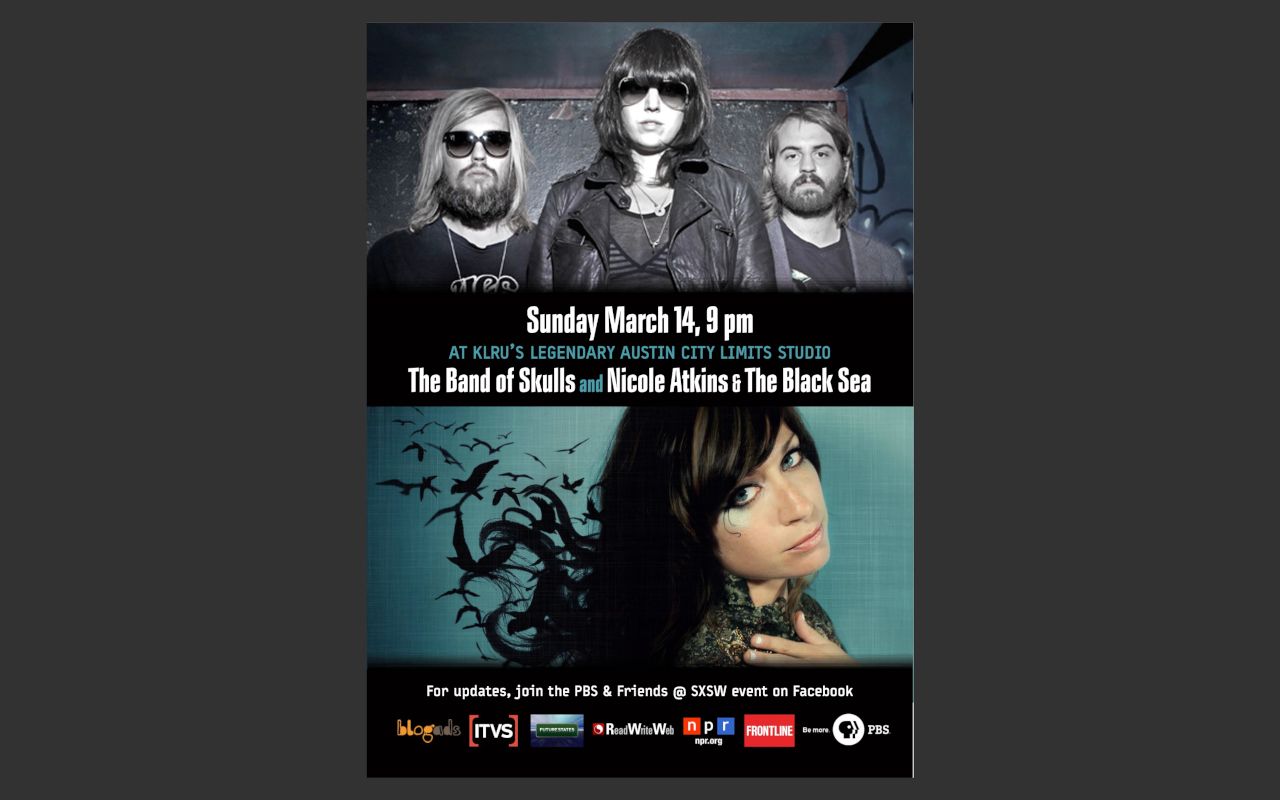
I’d also gotten another, more unusual, offer, this time from New York City. Lou Sagar, a business agent based in the Big Apple, emailed us in early February. “I am working very closely with Ai Weiwei, the leading Chinese contemporary artist, and unquestionably, the most prominent blogger in China,” he’d written. “I am extremely interested in exploring whether Richard would be receptive to participating in a ‘conversation’ with Weiwei at the prestigious Paley Center at the Museum of Television and Radio, on the topic of Art, Social Networks, and the impact it’s having on art, culture, and on social activism.” The event was scheduled for March.
This checked all the right boxes for me, as I was very interested in art at this time and I was familiar with Ai Weiwei’s work. He was a controversial figure in China and known to the international community for his constant needling of the Chinese government. He was famous worldwide as an artist and activist, and it would be an honor to share the stage with him.

I asked for further details, and Lou replied saying that Jack Dorsey (former CEO and now chairman of Twitter) would be participating too, but from San Francisco on a “live feed.” At this time, Dorsey was a popular figure in the tech industry, although not widely known by the public. Still, he was a name that would help sell tickets to the New York cultural establishment. I’d be the odd one out, being totally unknown outside of the Web 2.0 complex. But I was keen to meet both Weiwei and Jack, and I was sure this would raise my public profile, so I readily agreed to participate.
Lou said he’d cover flights and hotel for Elyssa and me, so we booked it in. The only problem was the timing—the PBS event was on Sunday, March 14, and the Paley Center event was the following night in New York City. I’d have to get the earliest cross-country flight possible on Monday. But again, this was an opportunity I couldn’t turn down.
Texan BBQ
As expected, SXSW was a whirlwind of socializing. The business meetings in Sixth Street cafés and the twenty-four-seven carousing were everything—the keynote presentations and daytime panels turned out to be beside the point.

Elyssa and I met up with most of the RWW team on Friday evening, and we all ended up at a random bar late that night. It was relatively low-key, and I was paying for the beer, since none of us knew where the insider parties were happening. If there was a member of our team who would’ve known, it was Jolie. Unfortunately, we didn’t see her.
We had made Jolie our community manager the previous November—the first time RWW officially had someone doing this role. A vivacious and intelligent woman in her twenties, she had flame-red hair and a charismatic personality. She was popular within Web 2.0 circles and helped raise our profile in certain online communities—Digg, especially. I’d given Elyssa the responsibility of managing Jolie, but that relationship was bumpy. In truth, over the past three months we’d had a number of issues with Jolie’s performance. She was inconsistent, and we never quite knew what she was up to. I’d even heard on the grapevine that she was looking for another job.
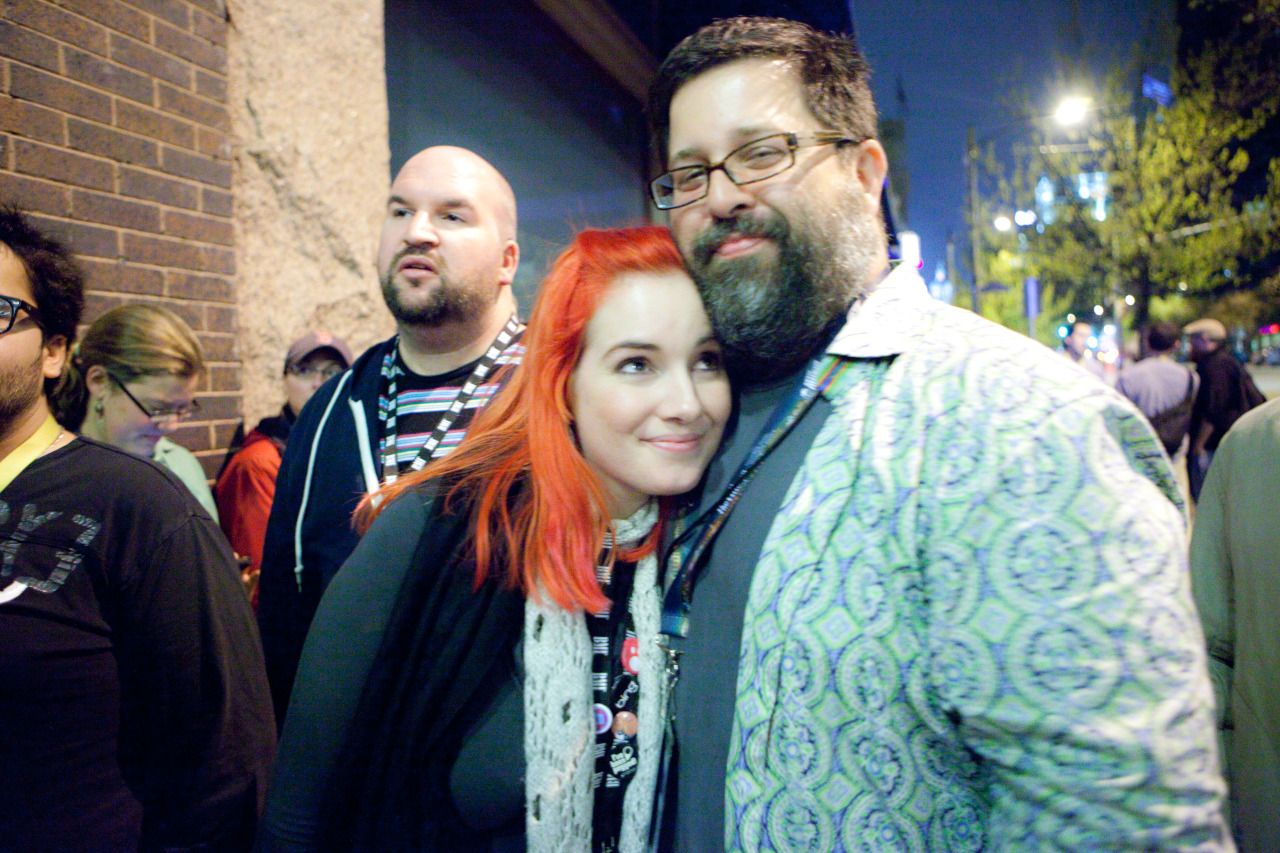
All that said, I liked Jolie, and she had one quality that the rest of us lacked: she was cool. I was rather hoping she would help RWW raise our profile at this trendy tech event, so it was disappointing not to see her that first night out.
While we didn’t manage to find the right party on Friday night, I had an enviable invitation to attend a dinner on Saturday evening at the Oasis restaurant, on Lake Travis just outside of Austin. John Pozadzides, a Dallas-based founder of a web statistics app called Woopra (of which RWW was an early user), had invited me and Elyssa. The Oasis was usually packed at this time of year, he told me, but he “had a hook-up there” and promised a table overlooking the lake, where we’d see “the most beautiful sunset in Austin.”
Poz, as he wanted me to call him, had an ulterior motive for the invitation. He requested an interview with me for the podcast he and Cali Lewis (from GeekBrief.TV) did together, Wealth Nation. I was happy to do it, as Poz was fun to chat to and I really did appreciate his dinner offer. He left it open for me to invite other members of the RWW team to the dinner, so I invited Sean and Marshall. In the end, only Sean came along with us.
The view was indeed breathtaking. Our table was on a balcony looking out onto the lake, and it was a clear, blue-skied evening. Right above us was a bronze statue of a woman diving into the picturesque scenery.
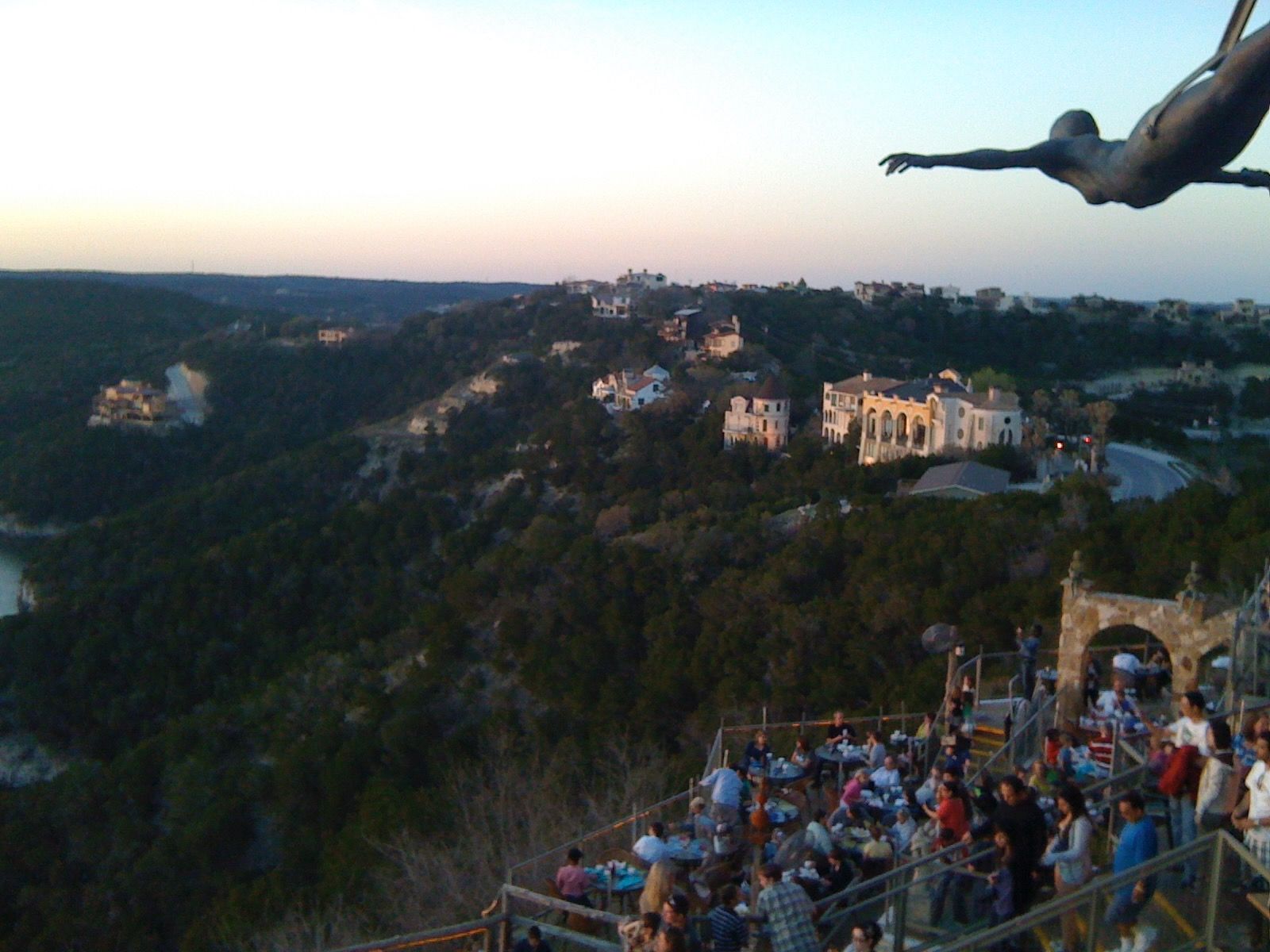
Poz’s partner, Vi, took a photo of all of us on the balcony just as the sun was about to disappear. The sky was orange and pink, and for once I looked relaxed and assured. I was wearing a navy-blue dress shirt and blue jeans, and my hair and beard looked almost golden set against this pretty backdrop. Elyssa was leaning into me, looking lovely in a white-patterned dress. Sean was on the other side of Elyssa, and he, too, was smiling and relaxed.
A professional photographer named Trey Ratcliff also joined us that evening. Trey ran a popular travel photography website called Stuck in Customs, and over dinner he told us of his plans to move to New Zealand. It bemused Elyssa and me because both of us wanted to eventually make the opposite migration: from New Zealand to America. Although I wasn’t yet sure if I wanted Colorado to be my destination, whereas Elyssa dearly wanted to settle back in her home state. Trey also told me he’d gone to our Real-Time Web Summit last October, which I was surprised to hear.

After a very pleasant dinner, John dropped us back in downtown Austin. I told Elyssa I wanted to go straight to a Digg-sponsored event at the outdoor Stubb’s Bar-B-Q venue. We got there just after 9:30 p.m., after Digg’s Kevin Rose and Alex Albrecht had done a live taping of their podcast (I’d had dinner with Kevin the previous month, while he was in Wellington). But we were in time to catch an alternative rock band called the Walkmen, who put on an excellent show. Stubb’s was heaving with people, most of them younger than me. It was an incredible atmosphere.
While at the Digg show, I bumped into Mashable founder Pete Cashmore, whom I hadn’t seen since January 2008. A lot had changed for both of us during the past couple of years; certainly, our respective blogs were much more popular now. But Mashable had grown the most—it had even overtaken TechCrunch in the Technorati list (Mashable was now third and TechCrunch seventh; RWW was ninth). This was perhaps peak Mashable, as it was hip and attracted the type of young audience packed into Stubb’s that night. Generation Y, the youth of the day, were flocking in droves to Facebook and the other social networks that Mashable covered.
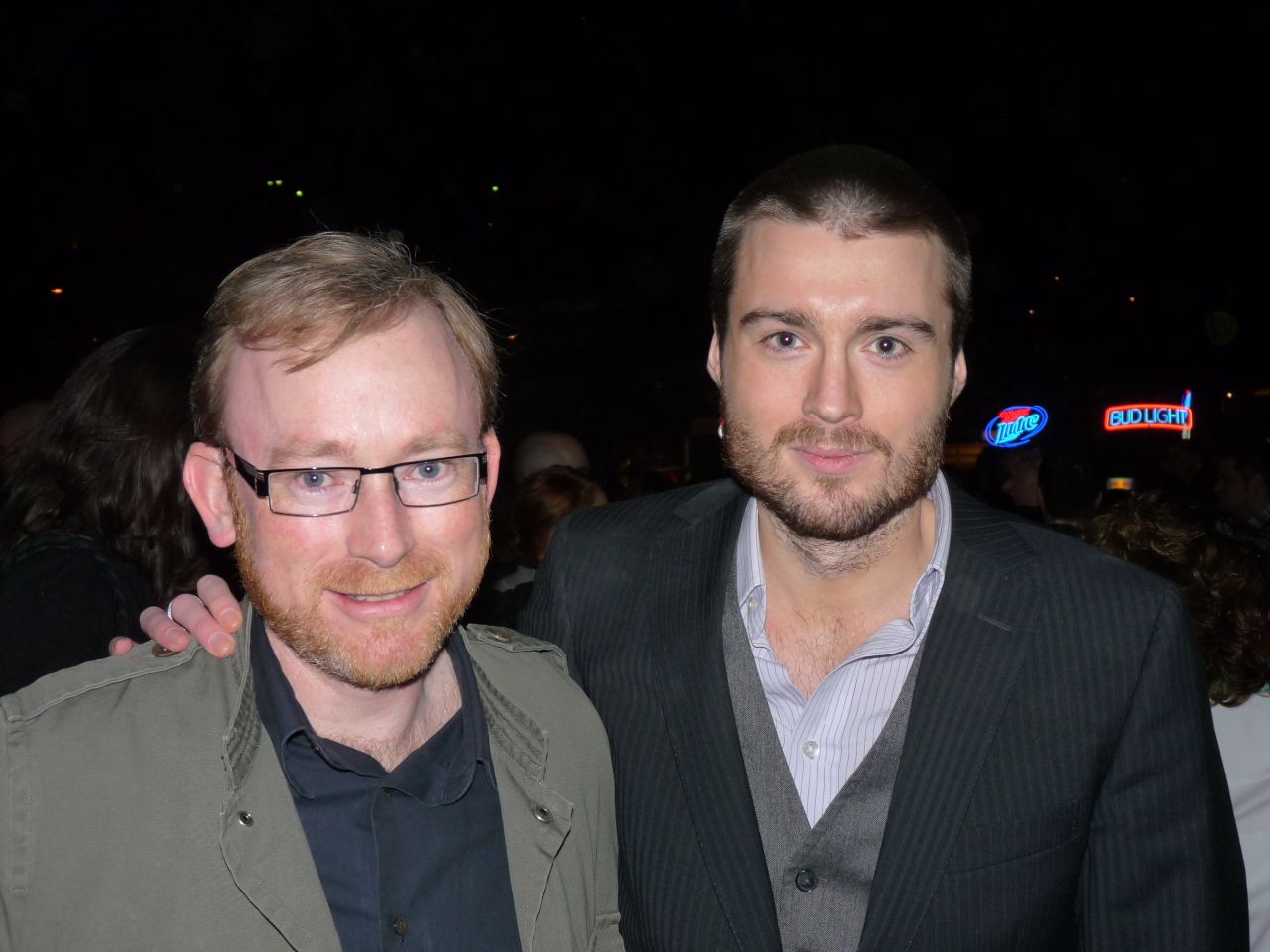
Although we attracted our fair share of Gen Y readers, RWW’s audience was on the whole a bit older and geekier; Twitter was more our kind of social network. Our readers also appreciated the wider and deeper coverage of tech trends that RWW offered.
There was more than enough room in the growing social web for both of our sites, of course, and Pete and I smiled warmly as someone snapped a photo of us. These were good times; we had nothing to complain about.
Austin City Limits
Sunday evening was our party at the legendary Austin City Limits Studio. It was a PBS production, really, and they had organized the event and the onstage musical talent: Nicole Atkins as the opener and Band of Skulls as the main act. We had an allocation of tickets and thus thought all we had to do was shepherd the people on our list (mostly our sponsors) through the door. But this turned out to be easier said than done.
The PBS security staff at the event insisted that there were no lists for the event, so we were having trouble getting our people in—including ourselves. Having ascertained that there wasn’t a special cohost entry into the venue, Elyssa and I joined a long line with lots of other people. At the rate it was moving, it didn’t look like we’d even get in at all. I messaged Sean to ask what was happening, and he came out to meet us. There had been a pre-party, he said, and it turned out that was the only time our list would be honored. Clearly there had been a miscommunication because I’d not even considered that we had to turn up super-early to get in. Elyssa and I continued to stand in line while Sean went back to the front of the queue to plead our case.
Meanwhile, a few of our sponsors had spotted me in the line, and one by one they came over to ask when they were getting in. I tried to explain about the list mix-up and that it didn’t seem like we would get our people in. The looks I got back were part mystified and part angry—these were people whose companies sponsored several industry blogs, and they were clearly unaccustomed to standing in line for events cohosted by those blogs. Fortunately, Sean came over while I was talking to one of the sponsors and assured them they’d get in. I didn’t know how Sean planned to do this, but I recognized that his assurances were better than my “there’s nothing we can do” shrugs. We had to at least make a show of doing our best to get them into the venue. Once again, Sean went back to talk to security.
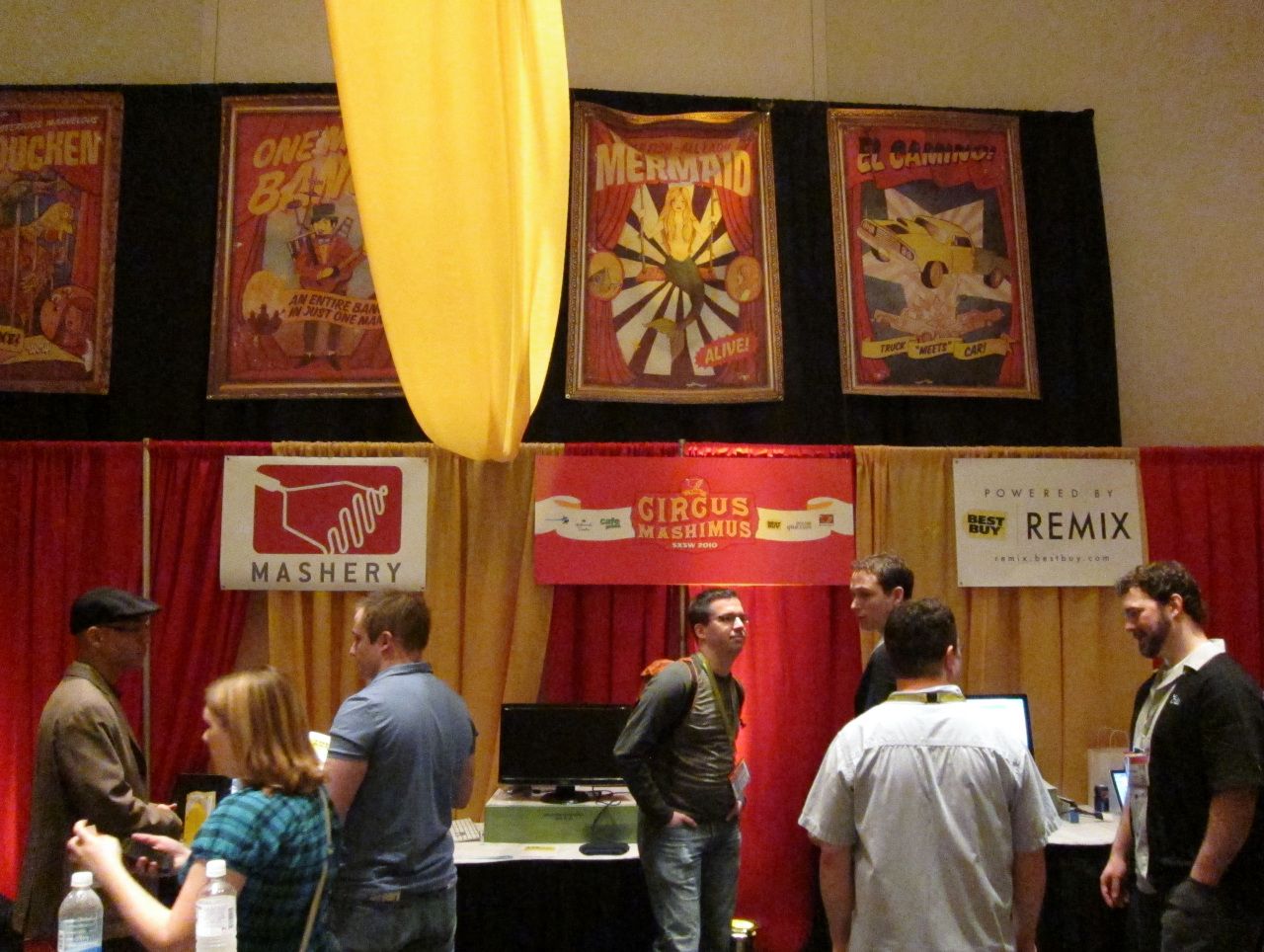
Eventually we got both ourselves and our sponsors in, but it had seemed unnecessarily stressful—and quite embarrassing for us, in terms of our sponsors’ expectations. We’d learned the hard way that even though we were cohosts of the event, the reality was that we had little control over it. Next time at SXSW, we’d make sure to organize our own event.
I was already rather anxious that night, since tomorrow morning Elyssa and I were flying out to New York City for the Ai Weiwei event. We had to be at the airport at 5:00 a.m., but it was 11:00 p.m. by the time the main act came onstage. I supped a beer and distractedly watched the three-piece Band of Skulls play. They were admittedly awesome—the front man was a short, skinny dude with shoulder-length blond hair and an electric guitar who resembled Kurt Cobain. Also like Cobain, he was shorter than his bass player, a tall, lean woman who looked like a member of the Ramones.
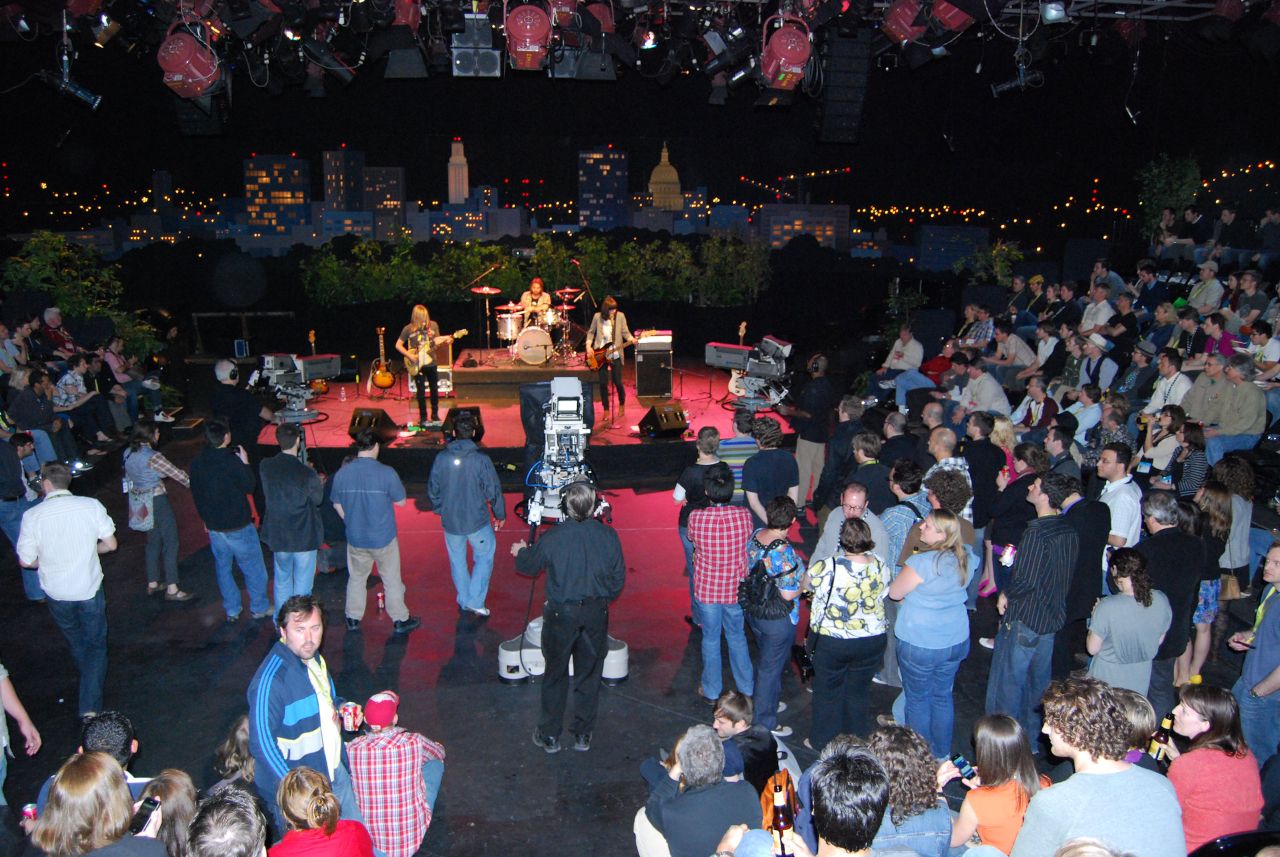
Partway through their blistering set we saw Sean again. He looked pretty stressed out, and I asked if he was okay. He said he’d had an issue with Jolie at the door. She had brought along a bunch of bloggers and had tried to get them into the venue but had been turned back by PBS security. Rather than accept this, Jolie had argued with the security team. “We were just going in circles, and frankly I didn’t feel she was helping,” Sean said, wiping his brow. The situation apparently escalated when Jolie overheard someone from PBS say that Band of Skulls had given them a list and that those people would be getting in. She began yelling at the security staff, which meant Sean had to step in and sternly tell her to move on. At that point, she finally left.
For all the trouble the evening had been for RWW, we were happy that at least our sponsors had gotten in to enjoy the show. But it was nearly midnight by this time and I was anxious to get back to our hotel for a few hours’ kip before heading to the airport. Sean said he’d stick around for the rest of the night to schmooze with the sponsors. Elyssa was buzzing from the show and wanted to stay for the rest of the Band of Skulls set. But she could see I was a bundle of nerves and needed some rest, and so we left as the band played on.
This post is part of my serialized book, Bubble Blog: From Outsider to Insider in Silicon Valley's Web 2.0 Revolution. View table of contents.
Next up: 046. Democracy on the Net: Onstage With Ai Weiwei and @Jack
Buy the Book
My Web 2.0 memoir, Bubble Blog: From Outsider to Insider in Silicon Valley's Web 2.0 Revolution, is now available to purchase:
- Paperback, US$19.99: Amazon; Bookshop.org
- eBook, US$9.99: Amazon Kindle Store; Apple Books; Google Play
Or search for "Bubble Blog MacManus" on your local online bookstore.